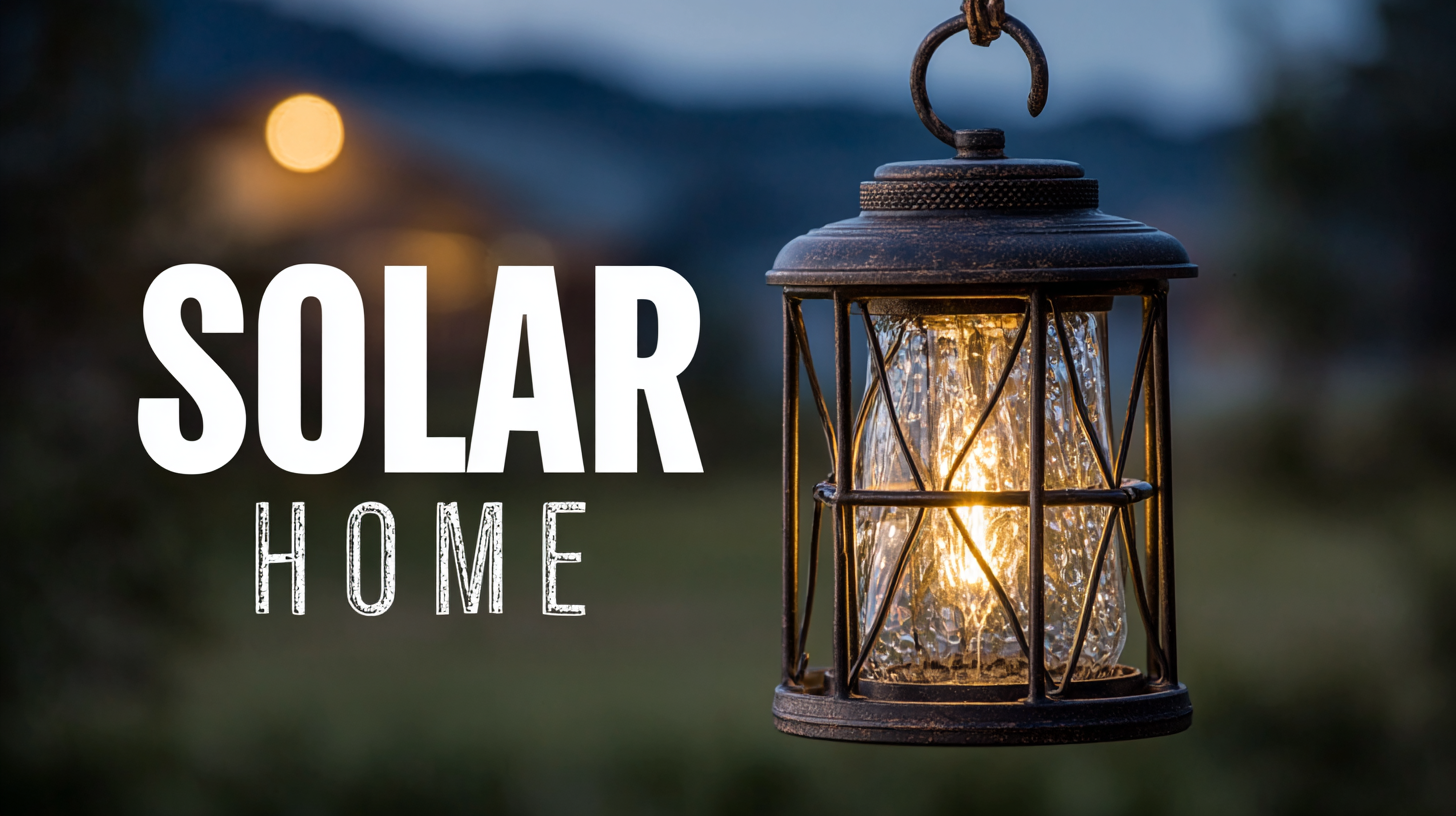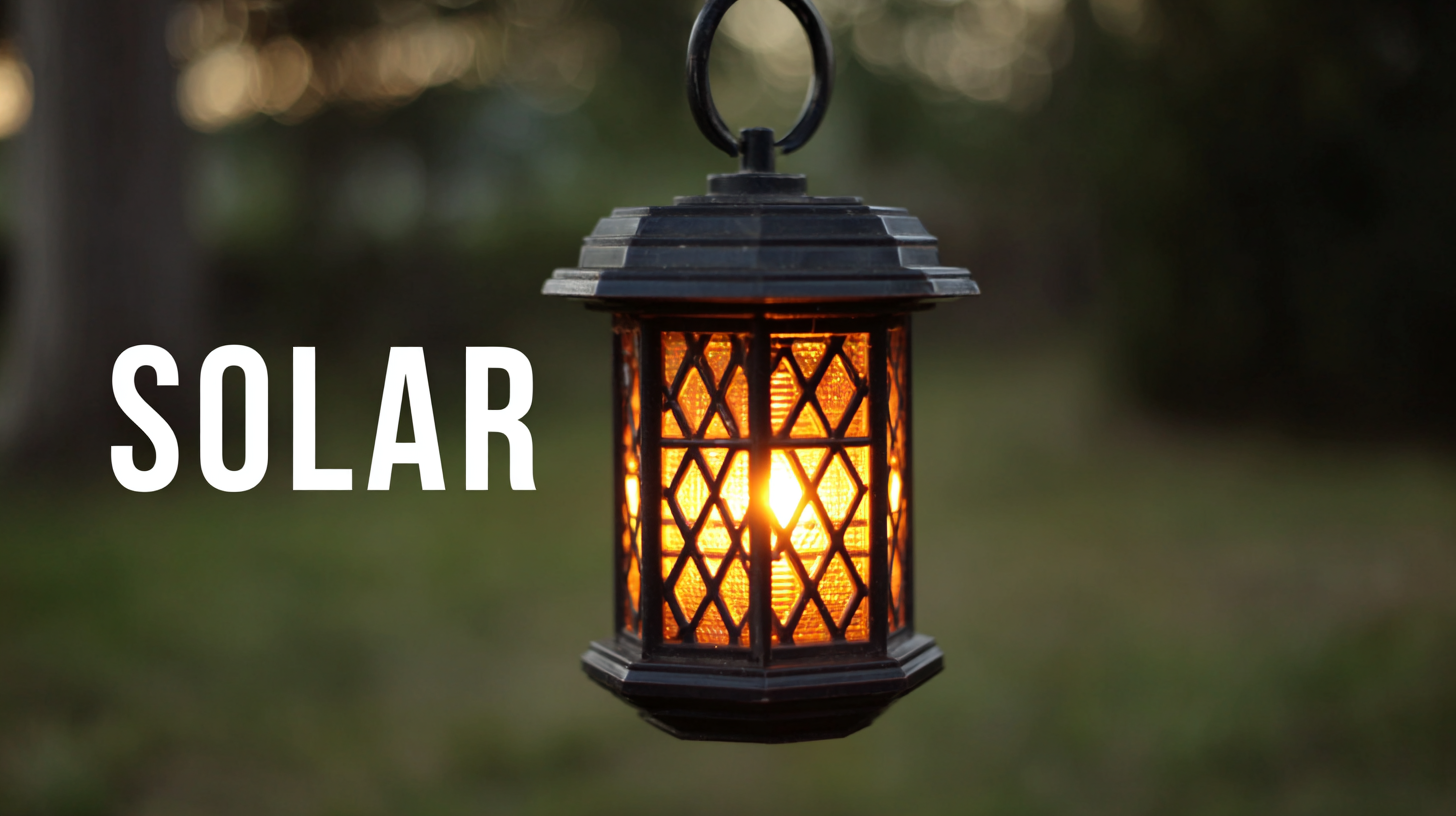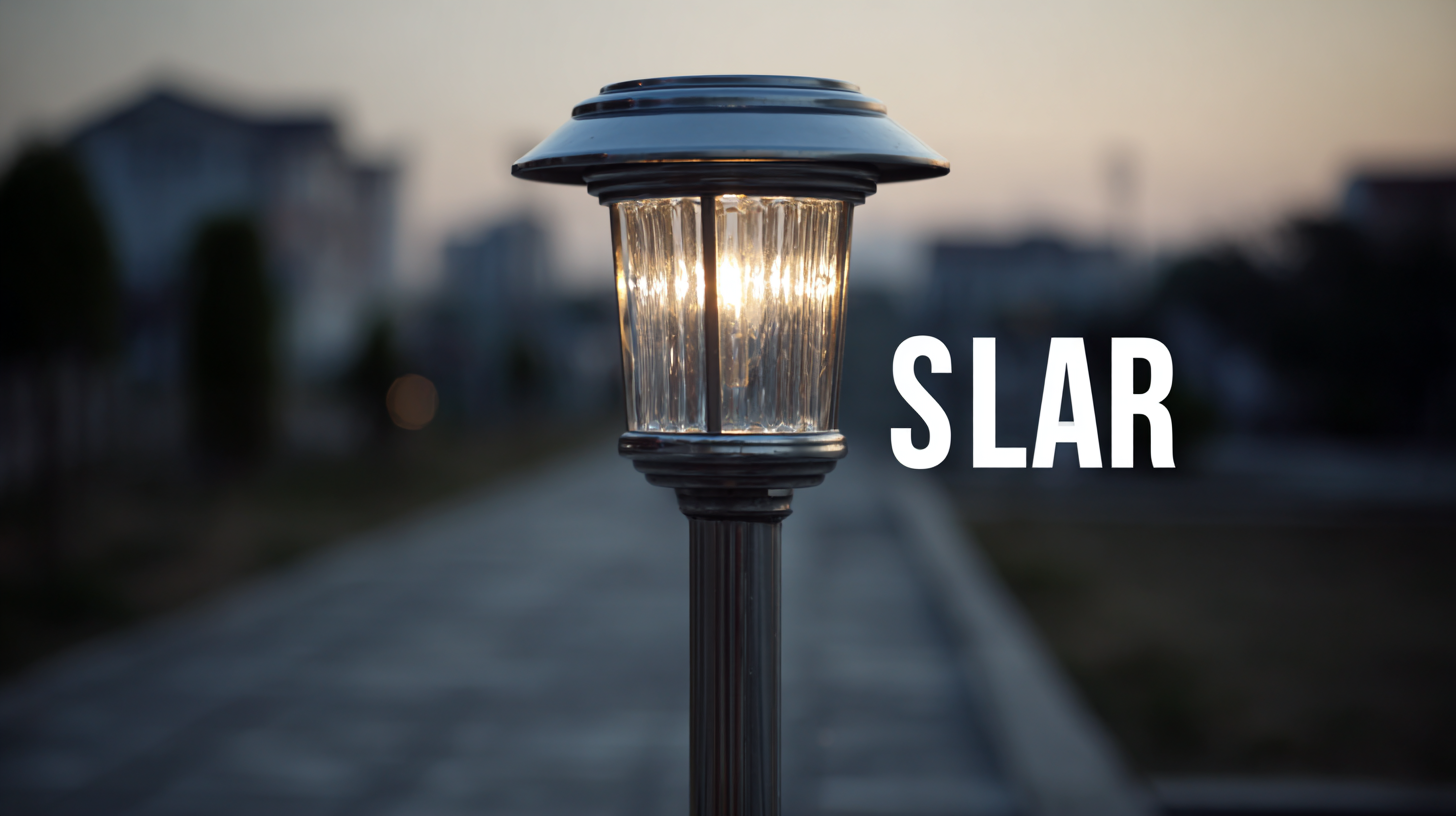News
Common Issues with Choosing the Best Solar Light for Home Use
As homeowners increasingly seek sustainable energy solutions, the demand for effective solar light for home use has surged. According to the Solar Energy Industries Association (SEIA), the residential solar market has grown by over 167% in the past five years, signaling a shift in consumer preference towards eco-friendly alternatives. However, selecting the best solar light can be challenging due to various factors including brightness, battery life, installation requirements, and cost-effectiveness. Research from Allied Market Research predicts that the global solar lighting market will reach $7.2 billion by 2027, underscoring the importance of making informed choices. This blog aims to address common issues faced by consumers and provide guidance on how to choose the most suitable solar light for home use, ensuring that your investment leads to enhanced outdoor space illumination while promoting environmental sustainability.

Common Mistakes to Avoid When Selecting Solar Lights for Residential Use
When selecting solar lights for residential use, many homeowners fall victim to several common mistakes that can lead to disappointment in performance and durability. One significant error is overlooking the importance of brightness, typically measured in lumens. Many people assume that brighter is always better without considering the specific needs of their space. For instance, walkway lighting requires a different brightness compared to accent lighting in a garden. Identifying the right level of brightness based on the location and purpose can dramatically enhance the effectiveness of your solar lights.
Another frequent mistake is neglecting the quality and specifications of the solar panels. Not all solar lights are created equal; some use lower-grade panels that charge inefficiently, resulting in dim lighting during the night. Inspecting the wattage of the panels and reading reviews can provide insight into their performance. Additionally, homeowners should pay attention to the construction materials of the lights. Solar lights exposed to harsh weather conditions need to be made from durable, weather-resistant materials to ensure longevity and reliable operation. By avoiding these pitfalls, you can make a more informed choice and invest in solar lights that truly meet your needs.
Understanding Solar Light Technology Trends for 2025 and Beyond
As the world shifts towards sustainable energy solutions, solar light technology is evolving rapidly, with exciting trends anticipated for 2025 and beyond. One significant trend is the advancement in photovoltaic cells, which are becoming more efficient and cost-effective. These improvements enable solar lights to harness more energy from sunlight, enhancing their performance even in low-light conditions. This advancement means homeowners can expect brighter, longer-lasting illumination while reducing their dependency on traditional power sources.

Another emerging trend is the integration of smart technology into solar lighting systems. With the rise of the Internet of Things (IoT), solar lights are expected to feature enhanced connectivity, allowing them to be monitored and controlled through smartphone apps. Homeowners will be able to customize settings, adjust brightness levels, and even schedule lighting according to their preferences, significantly improving convenience and energy management. As these trends continue to develop, understanding them will be crucial for homeowners aiming to choose the best solar lighting solutions that align with their energy goals and lifestyle preferences.
Key Features to Look for in Home Solar Lighting Solutions
When selecting the best solar lights for home use, it's essential to focus on key features that ensure functionality and efficiency. One of the most critical aspects to consider is the brightness of the solar lights, measured in lumens. According to a report by the U.S. Department of Energy, outdoor solar lights typically range from 100 to 1,800 lumens. For general pathway lighting, 100 to 200 lumens are sufficient, whereas for security and larger areas, lights with 800 lumens or more are recommended. This variation in brightness can significantly influence the utility of the lighting solution in various home environments.
Another important feature to look for is the battery capacity, which impacts how long the lights will operate once charged. The National Renewable Energy Laboratory emphasizes the importance of battery quality, with lithium-ion batteries being a top choice due to their longer lifespan and better performance compared to traditional lead-acid batteries. A good solar light setup should ideally allow for six to eight hours of illumination after a full day of charging, making the battery's capacity and efficiency vital considerations. Furthermore, durability is crucial; lights designed with weather-resistant materials and ratings, such as IP65 or higher, can withstand harsh environmental conditions, ensuring longevity and continued performance over time.
How to Choose the Right Solar Lights for Different Outdoor Spaces
Choosing the right solar lights for your outdoor spaces can significantly enhance both the aesthetics and functionality of your home. When selecting solar lights, consider the specific areas you want to illuminate. For pathways, opt for solar path lights that are lower to the ground and have a wider spread of light to guide guests safely. Solar stake lights can add a decorative touch while providing necessary lighting for driveways or gardens. For larger areas such as patios or backyards, consider solar flood lights that offer adjustable brightness settings and can cover a broader area.
Another critical factor in your selection should be the ambiance you want to create. If your goal is to foster a cozy atmosphere for evening gatherings, warm white solar lights are ideal. On the other hand, if you require strong, bright lights for security purposes, choose solar lights with cooler, brighter tones. Always assess the amount of sunlight the intended areas receive throughout the day, as this will impact the performance and longevity of your solar lights. By considering these aspects, you can effectively choose solar lights that contribute to both safety and style in your outdoor spaces.
Common Issues with Choosing the Best Solar Light for Home Use
The Impact of Battery Technology on Solar Light Performance in 2025
As we move into 2025, the evolution of battery technology will significantly impact the performance of solar lights for home use. Current reports from the International Renewable Energy Agency (IRENA) indicate that advancements in lithium-ion and solid-state batteries can increase energy density by up to 30%, leading to longer-lasting power for solar lighting solutions. This means that homeowners can expect more reliable illumination during cloudy days and nights, extending the usability of solar lights well beyond the limitations observed in previous technologies.
Moreover, innovations in smart battery management systems are enhancing the efficiency of energy storage. According to a report by MarketsandMarkets, the smart battery market is projected to grow by over 25% annually, with applications in residential solar energy systems. This growth is crucial for solar lights, which require intelligent energy management to maximize performance and longevity. By 2025, we will likely see solar lights equipped with these advanced batteries, offering features such as adaptive brightness and real-time performance monitoring, ultimately providing users with a more efficient and seamless lighting experience.

